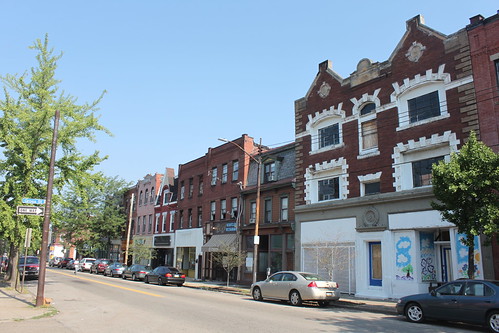Recently urban policymakers have begun to make ”rightsizing” a watchword for the perceived mismatch between shrinking city populations, physical and infrastructural plants, and budgets. Built for a population in some cases over twice as large as that currently within the city limits, shrinking cities are now left with an unmanageably large array of streets, utilities, public buildings, parks, and housing. “Rightsizing” refers to the yet-unproved process of bringing cities down to a “right” size, meaning a size proportionate to city government’s ability to pay for itself. In practice, rightsizing has yet come to little in shrinking cities. In fact, no city in history has ever attained a fixed size, with unchecked growth the general pattern for cities from Victorian London to most of the developing world today. In the United States, decades of optimistic master plans have had little or no effect in reducing rates of population loss in deindustrializing cities such as Cleveland, Baltimore, or Philadelphia, all of which lost 25 to 60 percent of their populations between 1950 and 2010. Even in New Orleans, a city that had very good reasons to make deliberate decisions about where the city should and should not rebuild after Hurricane Katrina, political fears and widespread citizen opposition stymied rightsizing decisions.i Just as suburban developers resent planners’ proclaiming that they may not develop a parcel of farmland, residents of New Orleans resented that planners might transform their property or even their neighborhood into swampland.
On the surface, then, “rightsizing” appears difficult if not impossible for shrinking cities in the United States. The term also remains somewhat meaningless, as neither scholars nor practitioners have thus far defined it exactly. What physical form and size should the city take after abandonment? What decisions should city officials make, concerning which aspects of the city should survive and who should live where? How much would rightsizing cost, and who would pay? Does an ultimate vision of the city guide rightsizing, or will policymakers simply follow immediate imperatives?
This chapter will argue that scholars and policymakers should consider using an urban design vision, at least in part, as they plan for rightsizing. Though many shrinking cities began as unregulated industrial centers with little urban design, population decline and housing loss today present designers and planners with a new opportunity to shape a better physical environment in concert with these cities’ present economic and social needs. Given that many view the visual landscape of shrinking cities as their most striking and disturbing feature,ii urban design seems an obvious means by which planners and designers might reshape these cities after decline and, by extension, explore new forms of the ideal urban neighborhood and, perhaps, the ideal city.
As abandonment of buildings and properties characterize shrinking cities, any urban design strategy for these places must contend with abandonment before all else.iii Abandonment in shrinking cities is problematic at multiple scales. While planners and others often consider abandonment at the individual scale of a single building or property, abandonment also occurs at the scale of the city block, neighborhood, and city as a whole, causing different problems at different scales. This section will consider each of these scales before describing city- and neighborhood-scale urban design strategies that might help resolve the problems of abandonment.
On the surface, then, “rightsizing” appears difficult if not impossible for shrinking cities in the United States. The term also remains somewhat meaningless, as neither scholars nor practitioners have thus far defined it exactly. What physical form and size should the city take after abandonment? What decisions should city officials make, concerning which aspects of the city should survive and who should live where? How much would rightsizing cost, and who would pay? Does an ultimate vision of the city guide rightsizing, or will policymakers simply follow immediate imperatives?
This chapter will argue that scholars and policymakers should consider using an urban design vision, at least in part, as they plan for rightsizing. Though many shrinking cities began as unregulated industrial centers with little urban design, population decline and housing loss today present designers and planners with a new opportunity to shape a better physical environment in concert with these cities’ present economic and social needs. Given that many view the visual landscape of shrinking cities as their most striking and disturbing feature,ii urban design seems an obvious means by which planners and designers might reshape these cities after decline and, by extension, explore new forms of the ideal urban neighborhood and, perhaps, the ideal city.
As abandonment of buildings and properties characterize shrinking cities, any urban design strategy for these places must contend with abandonment before all else.iii Abandonment in shrinking cities is problematic at multiple scales. While planners and others often consider abandonment at the individual scale of a single building or property, abandonment also occurs at the scale of the city block, neighborhood, and city as a whole, causing different problems at different scales. This section will consider each of these scales before describing city- and neighborhood-scale urban design strategies that might help resolve the problems of abandonment.

No comments:
Post a Comment